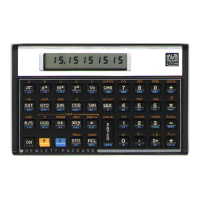SectionS:
Calculating
in
Complex
Mode
81
technique
that
doesn't
use
Complex mode
is
mentioned
on
page 16.)
Example:
The
response
of an
automatically controlled system
to
small
transient
perturbations
has
been modeled
by the
differential-
delay
equation
d
—
w(t)
+ 9
w(t)
+ 8
w(t
- 1) = 0.
at
How
stable
is
this
system?
In
other words,
how
rapidly
do
solutions
of
this
equation decay?
Every
solution
w(t)
is
known
to be
expressible
as a sum
involving constant coefficients
c(z)
chosen
for
each root
z of the
differential-delay
equation's associated
characteristic
equation:
z
+ 9 +
8e~z
= 0.
Every
root
z
=
x + iy
contributes
to
w(t)
a
component
ezt
—
ext(cos(yt)
+ i
sin(y£))
whose
rate
of
decay
is
faster
as x, the
real
part
of z, is
more negative. Therefore,
the
answer
to the
question
entails
the
calculation
of all the
roots
z of the
characteristic
equation. Since
that
equation
has
infinitely many roots, none
of
them real,
the
calculation
of all
roots could
be a
large task.
However,
the
roots
z are
known
to be
approximated
for
large
integers
n
by z
«
A(n)
=
-ln((2n
+
l/2)-n-/8)
±
i(2n
+
l/z)ir
for
n
—
0,
1,
2,
...
.
The
bigger
is n, the
better
is the
approximation.
Therefore
you
need calculate only
the few
roots
not
well
approximated
by
A(n)
—
the
roots with
\z\t
very big.
When
using Newton's
iteration,
what should
f(z)
be for
this
problem?
The
obvious function
f(z)
=
z + 9 +
8e~z
isn't
a
good
choice
because
the
exponential grows rapidly
for
larger negative
values
of
Re(2).
This
would slow convergence considerably unless
the
first guess
z0
were extremely close
to a
root.
In
addition,
this
f(z)
vanishes infinitely
often,
so
it's
difficult
to
determine when
all
desired roots have been calculated.
But by
rewriting
this
equation
as
ez
=
-8/(z
+ 9)
and
taking logarithms,
you
obtain
an
equivalent equation

